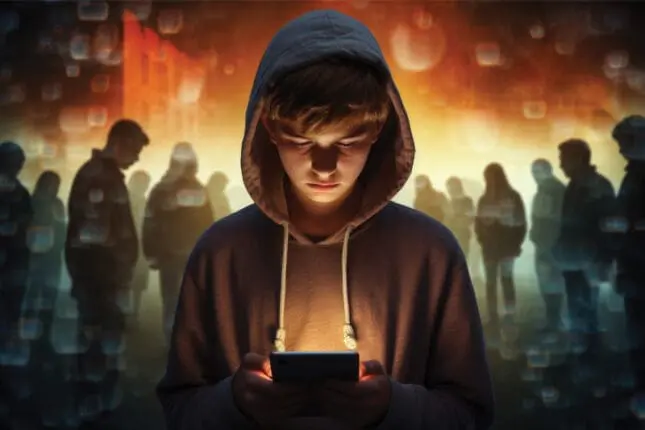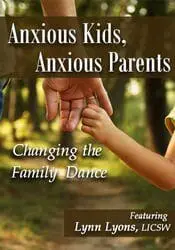Philip sat in front of me and sobbed. This surprised me, only because I hadn’t seen this level of emotional intensity from him in quite some time. Six years ago, a depressed and isolated young man, he could barely make eye contact in sessions.
But he worked hard on the source of his issues: social anxiety. Now, he was out in the world: he had a full-time job that required constant interaction with people, enjoyed running and weight training, and even took trips to big concerts out of state. His next step: enrolling in college classes, something he couldn’t even consider a few years ago.
We had, in fact, been talking about these positive changes at our monthly check-in when he’d become so upset. “You know I’m behind,” he’d said. “I’m not where I should be.” He wanted a relationship. He had no contact with friends from high school. He hiked and went to concerts, but by himself. He was lonely.
Suddenly, anger clouded his face. “They left me in my room for five years,” he exclaimed, almost yelling. “They let me stay in there. They shouldn’t have let me stay in there!”
After 33 years of being a therapist and treating hundreds of anxious families, I’ve sat with a lot of pain, but nothing hurts my heart more than hearing a child or a teen or a parent express deep, gaping loneliness—the wish to be included, confusion about why they were left out, a yearning for a friend so intense it feels like needing air to breathe. Tears welled. Philip and I held eye contact in silence. I nodded, afraid that if I tried to speak, my voice would crack. Finally, I almost whispered, “I know.”
The arrival of today’s young people at this heartbreaking place has been scrutinized, probed, and dissected in the media and in our field. The alarms are sounding. Loneliness is now being called an epidemic. Research done in 2019 and 2020 by Jean Twenge and colleagues showed a steady rise in adolescent loneliness since 2011. Teens with low in-person social interaction and high-social media use were deemed most at risk. The pandemic clearly made the situation worse.
How can we get ahead of this loneliness surge? In my view, we go to a significant source of its cause: anxiety. It’s the most common of mental health disorders. It runs in families. It usually arrives in childhood and is a powerful risk factor for depression during the teen years. It makes a child’s world smaller, lonelier. It doesn’t care if a child never tries out for a school play, goes to a sleepover, gets a part-time job, or asks someone on a date. Its aversion to any social risk derails a child’s potential for connection, and yet we do its bidding.
I get it. Being a spectator to a child’s struggle with anxiety, especially as a parent, is daunting. So caring adults—including parents, schools, doctors, and mental health professionals—end up colluding with the disorder itself, joining with anxiety’s demand for comfort and certainty by letting kids hole up in their rooms, stay home from school, turn down playdates. The result of all this well-intentioned help is loneliness.
Accommodation Works in the Short Term
Humans tend to be much better at reactive accommodation than active prevention, especially when accommodation appears to work well. This is the case with social anxiety.
When children are small, parents can engineer a social environment to be kind and inclusive. Most adults will make sure the shy or inhibited child comes to the party. Parents will volunteer with sports or other activities to make sure a child is included. Terrific! It works! But when a child enters middle school, such social engineering is no longer acceptable. Mom can’t attend the sleepover. Coaches make cuts. Plays have auditions. Kids get smartphones and social media. And because the practice needed to manage new experiences and develop connections hasn’t happened during those adult-managed early years, the socially anxious teen starts to flounder. Parents feel compelled to negotiate with the anxiety, hoping for any social contact that’s still acceptable (meaning safe and comfortable) to the disorder. They think, At least he’s gaming with people. At least she’s included in the group text. At least they’re going to school, even if for only one period, arriving late and leaving early to avoid people in the halls or noisy cafeterias.
And the problem grows, as more and more compromises made with the anxiety are based on avoidance. Adults want to intervene, but just try forcing a teen to go to a school dance or join a club! Schools might step in and create plans for socially anxious students that ultimately put the disorder in charge (often in keeping with the recommendations of the “outside provider”). The very things we know actually help address social anxiety—practice, exposure, tools to dispute anxiety’s catastrophic stories—are now too hard, too big to engage with. Momentum in favor of engagement is lost. Diagnoses and hopelessness pile up. Kids stay home. Isolation wins—a gateway into depression.

Technology Makes It Easy to Be Alone
Parents I see have repeatedly told me the same story: at first, covid was a dream come true for their socially anxious teen. Isolation was normalized. The definitions of “friends” and “hanging out” changed. Some families felt relieved to sidestep the messiness of adolescent relationships for a time, but for the kids who were already struggling socially, the reprieve had two particularly disastrous results: precious relational practice time was lost, so skills weren’t able to be developed; and technology became even more appealing.
Ah, technology! While it can certainly help keep us connected in useful ways, even now I notice more and more families struggling to keep socially anxious teens from settling completely into passive, online worlds that allow them to spectate life from the bleachers, rather than stepping into the real world of uncertainty and judgement. At best, social media serves as empty calories, staving off the immediate pangs of hunger but offering no sustaining nutritional value. They so want it to be enough, but virtually every parent I talk to speaks of the longing their child expresses. “She feels invisible,” Deidre said of her 16-year-old. “She wants to be more connected, but it’s too stressful for her. So now she’s rejected. She comes across as aloof, but she’s really just afraid to show who she really is.”
Many parents describe their child’s social life as comprised almost entirely of online friends and influencers they’ve never met. Some of these parents prioritize activities and interaction as keys to helping, and they’re correct in doing so. What I try to help them understand, however, is that the quality not quantity of interaction is what’s necessary for practicing getting out there and allowing for the possibility of deeper connections.
Melissa’s 14-year-old son, now in eighth grade, was always an anxious kid, she told me, and he did great during covid. Then it was time to reenter middle school. “He literally has no friends right now,” she said. He wishes he had someone to play with, but his fear of rejection keeps him from reaching out. She’s forcing him to participate in soccer—something she’s never done before—because she sees no other way to get him to interact with peers. “Weekends are long and boring for him. He’s alone.”
Andi described her 16-year-old son who struggles with social anxiety and an expressive language disorder. When he was in elementary and middle school, he had a group of friends because Andi was fostering those friendships. Now, without her as the social facilitator, he prefers to be in his bed in the dark, on social media. She sees signs of depression (although he’d deny that), works to keep him in situations with other people (like requiring he volunteer at an animal shelter), and is constantly thinking about the skills he needs to develop as he goes through high school and beyond. “He seems happy to be alone,” Andi says. “But how can you be happy when you’re alone?”
Social Problems Require Social (and Creative) Solutions
I received an email from a mother recently, looking for help for her kindergartener who, in her words, “is having panic attacks.”
“There are so few people who treat children that age,” she said. “Who do I call?”
“You don’t need someone to work with your five-year-old,” I responded. “You need someone to coach and direct you. Later, you’ll need someone to work with both of you, together.”
I believe we harm families—families working to interrupt generational patterns—when we don’t give parents and kids clear instruction and active assignments to work on together or, even worse, when we exclude parents from therapy. If the very problem we’re treating is isolation and disconnection, why would we do therapy in isolation? Loneliness thrives when internal stories and conclusions are left unchallenged—and it’s hard to challenge them alone. The process of how anxiety grabs hold and the symptoms it causes must be explained concretely to our young clients and their supports. Tell them how avoidance begets avoidance. And since anxiety and loneliness are social issues, address the social gaps. Help parents collaborate with the school. Give them the road map, the language. When working with an anxious adult who’s a parent, talk openly about prevention and modeling.
Philip’s mother felt helpless during his teen years. How could she get him to participate in his life? Despite his anger at being left in his room, I know she worked hard to find answers. She took him to many doctors and therapists. He was prescribed a myriad of medications and given many different diagnoses, but no one, she told me, gave her—or him—any concrete direction.
As clinicians, we need to help our clients and their families get moving, literally and figuratively. Active approaches are required. Volunteering, finding a part-time job, being involved in unified sports, or mentoring should be major components of treatment plans, not adjuncts. Invite friends and grandparents and pets into the therapy room. The connections made in the office are essential, but they’re the springboard to encouraging and modeling connection out in the world. Group therapy for socially anxious teens or small group online classes for parents of anxious children address issues of both accessibility and affordability while creating connections.
Parents must hear good information. They’re asking us for it! Educators need knowledge and support to shift the paradigm in schools. Clinicians must talk directly about family patterns and teach preventive skills. In short, staying stuck ourselves in patterns of accommodation, isolation, and tired-out rules of engagement is shortsighted. We must hold our collective feet to the fire. We’re out of time.
Main Illustration by KRAMYNINA
Second Illustration by ZOLTAN ISTVAN BIRO
 Anxious Kids, Anxious Parents: Changing the Family Dance
Anxious Kids, Anxious Parents: Changing the Family Dance
Lynn Lyons
Lynn Lyons, LICSW, is a speaker, trainer, and practicing clinician specializing in the treatment of anxious families. She’s the coauthor of Anxious Kids, Anxious Parents and is the cohost of the podcast Flusterclux. Her latest book for adults is The Anxiety Audit.














